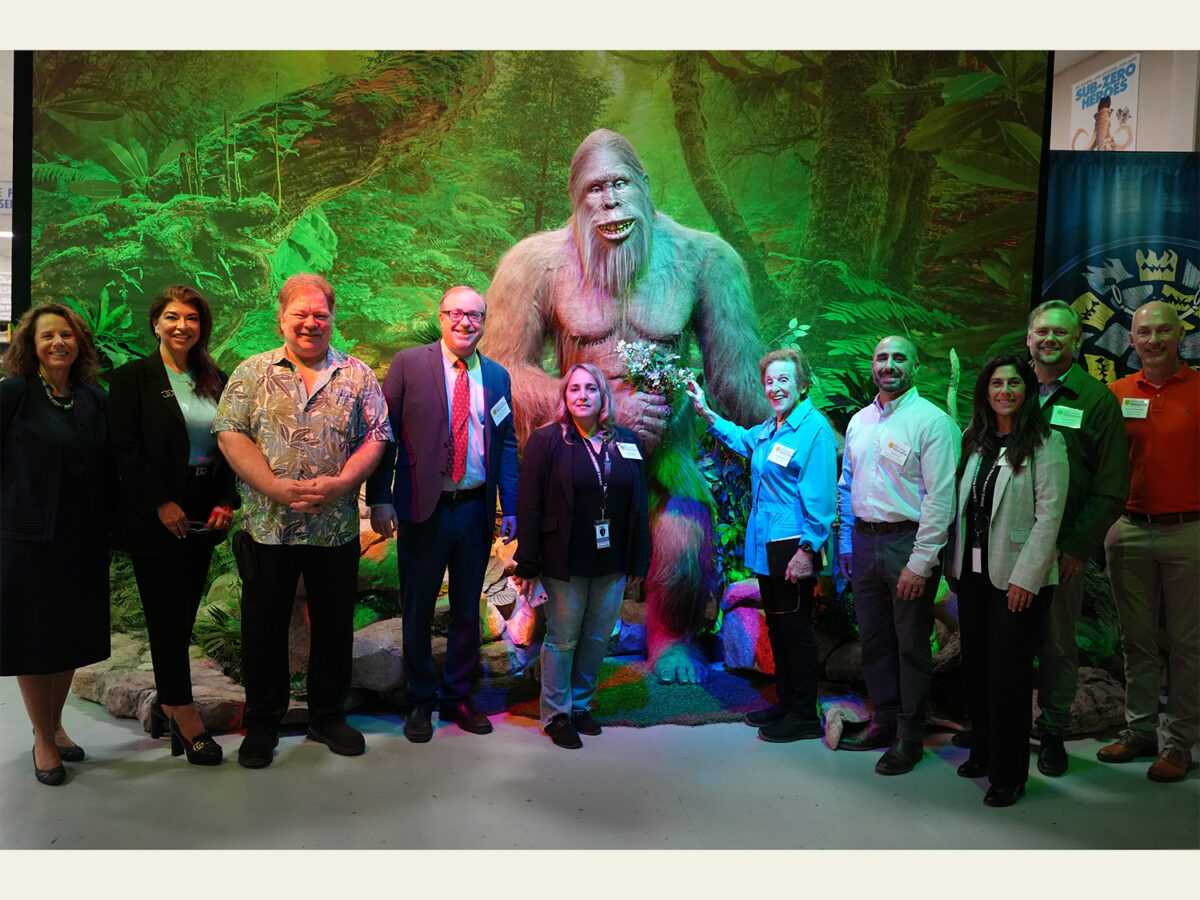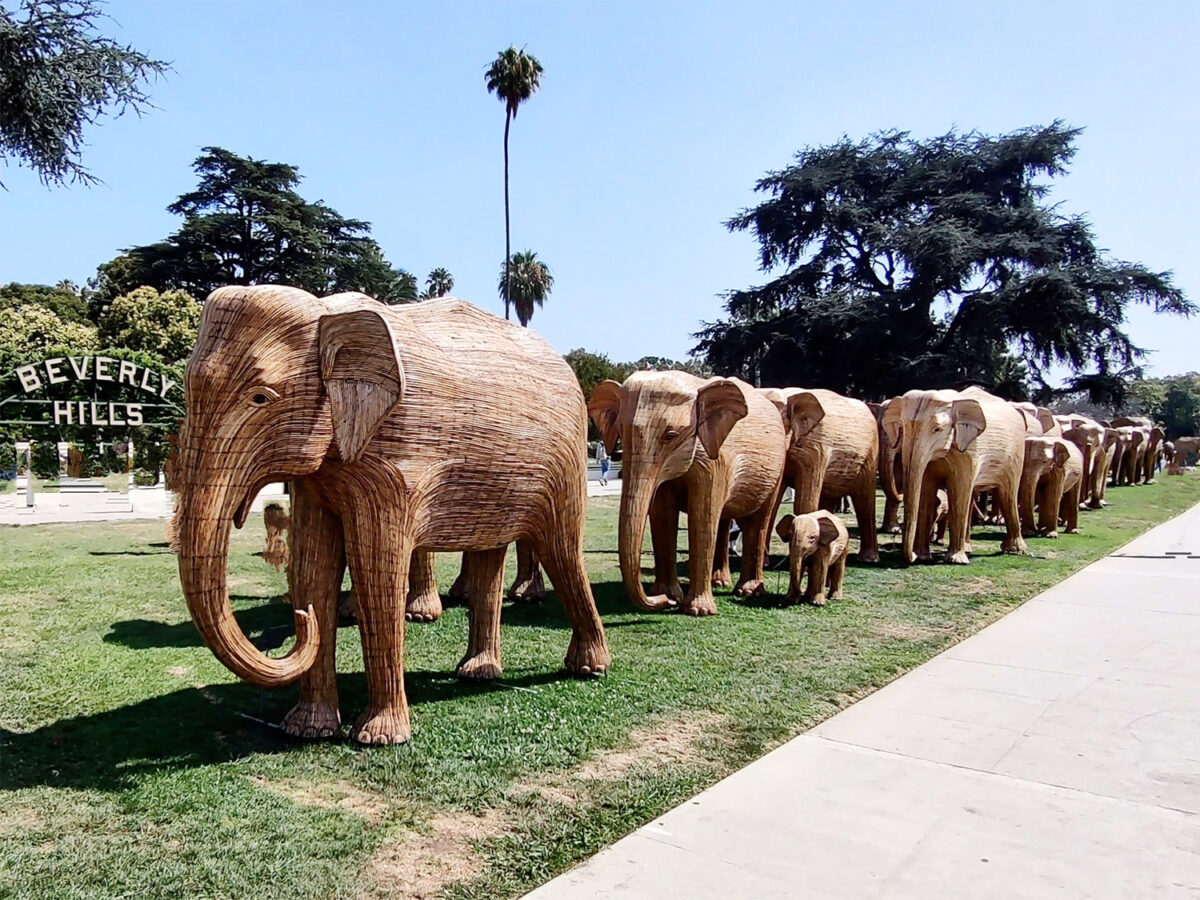For L.A.-based artist Channing Hansen, the felling of a century-old eucalyptus tree in his backyard in summer proved to be the catalyst for his latest body of work, “Entanglements” a vibrant series of woven paintings created via an algorithm of his own design, now on view at Marc Selwyn Fine Art in Beverly Hills.
A polymath with a penchant for delving deep into whatever fascinates him, Hansen found himself engrossed with a white fungus threaded within the newly cut tree stump, and then he went much, much deeper.
“I began reading about the way these mycelial networks function, taking in and redistributing nutrients and information to nearby vegetation in ways that seem to anticipate the internet. Some articles even jokingly called it the Wood Wide Web,” he said. “These mycelium visually resemble neural networks, as well as models of the universe. They transfer data at the quantum level, via neurotransmitters made up of tiny particles. Quantum entanglement therefore can be said to be the basis of all communication.”
The result of this inquiry is a series of large-scale “paintings.” While not the typical kind of paintings that one might think of those created using actual paint Hansen’s works of hand-dyed wools woven together to create contemporary masterpieces are anything but simple. Vibrant pinks, purples, greens and chartreuse are interwoven with a vast range of browns, greens and reds. The stitches are inconsistent and varied, with the variety of textures and colors ostensibly appearing entirely random, even though the random patterns have been deliberately contrived. Evocative of works by Wassily Kandinsky or Joan Miró in their colorful playfulness, Hansen’s paintings, although similarly abstract, generate their own draw in an entirely new way.
On view through Jan. 4, 2020, Hansen’s latest body of intricately knitted works reveals a deep commitment to process. From preparing and dyeing the raw fleece, then spinning the fiber into yarn to working with a chemist to create dyes that match the colors of his garden (he uses a spectrometer to measure a flower’s wavelength), Hansen’s artistic process is totally unique. To compose the woven paintings, Hansen uses algorithms this particularly one is based on growth patterns that structure fungus, neurons, and the distribution of galaxies to generate patterns which are then knitted and stretched over a frame. Changes in color, pattern, stitch and shape are all dictated by the computer algorithm he authored.
“A lot of artists just go to the paint store and they start painting and there’s not that whole world where there’s just the craft,” described gallery owner Marc Selwyn. “Most artists focus on one aspect. He is focusing on both, which makes his art very exciting.”
For this series, Hansen even built mistakes into the algorithm, whereby during the creation process he would occasionally be directed to move a pattern over or drop a stitch.
“It becomes a bit like a Fluxus scene,” Hansen described, highlighting his grandfather’s participation in the Fluxus movement of the 1960’s (essentially, a Dada-inspired anti-art group).
After the initial network of loops and knots of yarn have been executed via his algorithm, Hansen then superimposes a woven Feynman diagram over the painting. Nobel Prize winning quantum physicist Richard Feynman developed a pictorial representation to describe the behavior of subatomic particles, which are known as Feynman diagrams.
The result of Hansen’s intricate process is captivating, challenging notions of certainty in colorful vibrancy and provoking us to ponder just how connected everything truly is in this universe. It’s also the perfect exhibit to visit on a chilly winter day, given how cozy everything looks when knitted in yarn.







